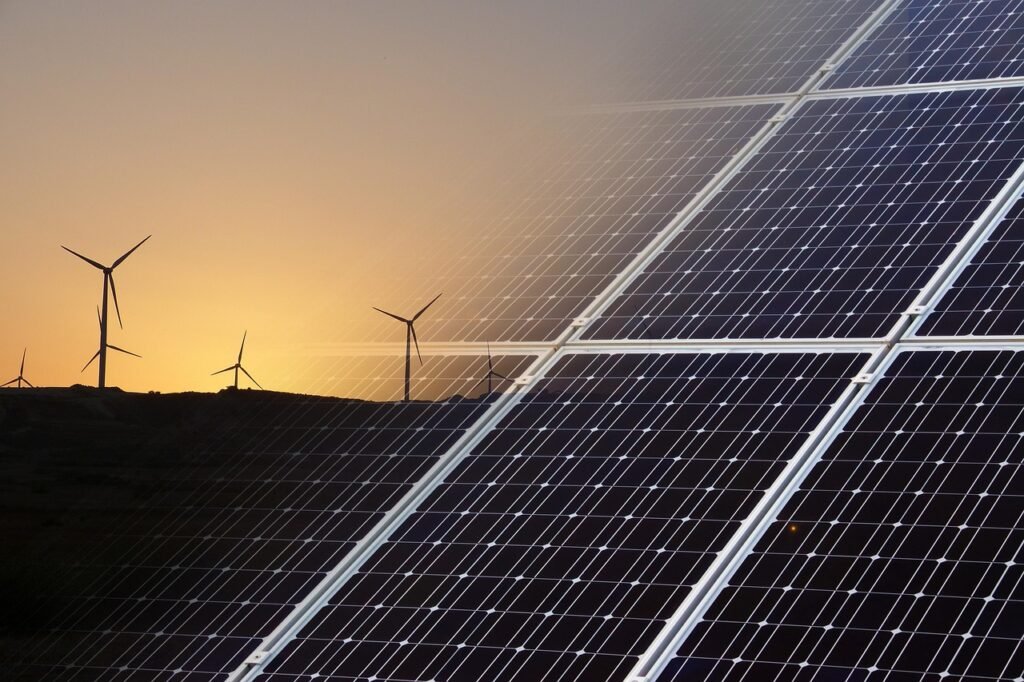Explore how AI clean energy planning is optimizing renewable energy sources, reducing waste, and accelerating the global transition to sustainable energy systems, driving the future of energy.
Introduction
As the world transitions to renewable energy sources, the need for efficient clean energy planning has never been more urgent. The rise of AI clean energy planning technologies is transforming the way we generate, distribute, and consume energy. By integrating artificial intelligence with renewable energy infrastructure, we can optimize energy production, enhance grid efficiency, and reduce waste.
In this post, we explore how AI is driving clean energy solutions and aligning with global goals, particularly SDG 7: Affordable and Clean Energy and SDG 13: Climate Action.
The Role of AI in Clean Energy Planning
Optimizing Renewable Energy Sources
AI plays a pivotal role in enhancing the efficiency of renewable energy sources such as solar, wind, and hydroelectric power. By analyzing real-time data from sensors and weather patterns, AI can:
- Predict energy production based on weather forecasts and real-time environmental factors.
- Adjust energy storage in real time to balance demand and supply.
- Optimize turbine placement and solar panel positioning for maximum energy generation.
AI’s ability to manage and predict fluctuations in renewable energy production makes it a key tool for reliable and sustainable power grids.
Benefits of AI in Clean Energy Systems
Listed below are the benefits we could gain by having AI-driven business system solutions that streamline operations:
Enhanced Grid Efficiency
With smart grids powered by AI, energy distribution becomes more efficient and adaptive. AI analyzes energy demand patterns, adjusts grid loads in real time, and balances intermittent power sources (like solar and wind) to maintain a stable supply.
Reduced Carbon Footprint
By improving energy efficiency and utilizing renewable sources more effectively, AI helps reduce carbon emissions. Optimized planning and predictive analytics also help reduce waste in power generation and storage, contributing to a greener future.
Cost Savings in Energy Production
AI can reduce costs by improving the accuracy of energy predictions, reducing maintenance costs, and optimizing the overall performance of clean energy systems. AI-driven analytics help utilities make better decisions about investments in infrastructure and technology.
AI in Smart Energy Grid Management
Predicting Demand and Supply
AI algorithms analyze past usage data and external variables to predict energy demand, allowing grid operators to make smarter decisions about when and where to distribute energy. This results in fewer blackouts, reduced energy loss, and lower operational costs. As such, we achieve the aim of redistributing resources fairly with data and Global Goals principles.
Real-Time Energy Storage and Distribution
AI ensures energy storage systems (such as batteries) are used optimally by predicting when energy is needed the most and discharging stored energy at peak times. This reduces reliance on fossil fuels and helps in balancing renewable energy production with consumption.
Challenges in Implementing AI Clean Energy Planning
High Initial Setup Costs
While AI offers substantial long-term benefits, the initial costs of AI-based infrastructure, sensors, and data analytics tools can be prohibitive, especially for developing countries.
Data Privacy and Security
AI-driven systems rely on vast amounts of data, including consumer energy consumption patterns. Protecting this sensitive data from cyber threats is crucial to maintaining public trust and safety.
Technological Integration
Integrating AI with existing energy infrastructure can be complex. Older grids and energy systems may require significant upgrades to accommodate AI-driven technology, which can slow down the implementation process.
Real-World Examples of AI Clean Energy Planning
- Google’s DeepMind and Energy Efficiency
Google’s AI subsidiary, DeepMind, uses machine learning to optimize energy consumption in its data centers. The technology has helped reduce energy usage for cooling by 40%, significantly cutting operational costs and carbon emissions. - AI-Optimized Solar Farms in the U.S.
In the U.S., AI is used to predict sunlight availability, optimizing solar panel performance and improving the overall efficiency of solar energy farms. - AI-Powered Wind Energy in Europe
In Europe, AI is being used to optimize wind turbine efficiency by analyzing wind patterns and adjusting turbine angles, maximizing energy output and minimizing wear and tear.

The Future of AI Clean Energy Planning
Decentralized Energy Systems
In the future, AI will enable decentralized energy systems where communities and individuals can produce, store, and distribute their own renewable energy. This shift will allow for more localized and resilient energy systems.
AI-Driven Energy Forecasting and Global Integration
AI will further improve energy forecasting, enabling global grids to integrate seamlessly. AI will allow energy systems across countries to exchange power more efficiently, reducing energy waste and reliance on non-renewable sources.
Conclusion
AI is revolutionizing the way we approach clean energy planning, enabling more efficient, cost-effective, and sustainable energy systems. As the technology matures and becomes more accessible, it will continue to play a critical role in achieving global energy goals, particularly SDG 7: Affordable and Clean Energy. By optimizing renewable energy resources, improving grid management, and reducing emissions, AI is paving the way for a greener and more sustainable future.

Learn more about sustainable innovations in our book—Global Goals: Every Achievement Counts, available from Amazon!